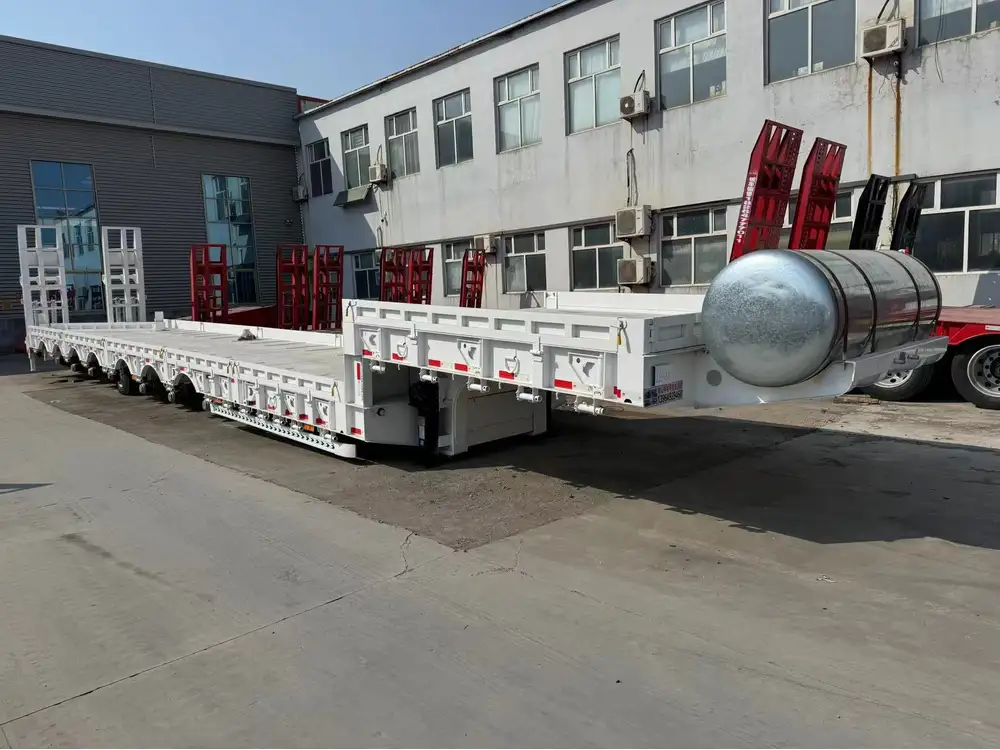In the landscape of heavy-duty equipment, flexibility is key. One equipment type that has emerged as both versatile and indispensable is the dump trailer. Often regarded merely as a tool for transporting loose materials, dump trailers can showcase their hidden potential when adapted for tasks typically assigned to forklifts. This article delves into the multifaceted ways to utilize a dump trailer effectively as an alternative to a forklift, catering to various industry needs.
Understanding the Dump Trailer: Basics and Benefits
What is a Dump Trailer?
A dump trailer is a heavy trailer equipped with a power-operated system that allows its bed to tilt, enabling the easy unloading of its payload. These trailers come in various sizes, materials, and configurations, making them highly adaptable across numerous applications such as construction, landscaping, and waste management.

Why Consider Using a Dump Trailer as a Forklift?
- Cost-Effectiveness: Utilizing a dump trailer for lifting and transporting materials can save costs on equipment rentals or purchases.
- Space Efficiency: Dump trailers are generally smaller than traditional forklifts, allowing ease of maneuverability in tight spaces.
- Multi-Functionality: With minor modifications, dump trailers can perform multiple tasks, improving operational efficiency.
Assessing the Adaptability of Your Dump Trailer
Identifying Tool Compatibility
Before considering the use of a dump trailer as a lifting mechanism, it’s essential to identify compatible tools. Here’s a quick compatibility guide:
| Tool Type | Compatibility | Recommended Modifications |
|---|---|---|
| Pallet Forks | Yes | Install forks onto trailer hitch |
| Cargo Barriers | Yes | Ensure secure attachment of barriers |
| Load Leveling Chains | Partial | Utilize to secure uneven loads |

Trailer Types and Their Lifting Capacity
The lifting capacity of a dump trailer can significantly influence its functionality as a forklift alternative. Here’s a quick breakdown of various trailer types:
| Trailer Type | Lifting Capacity (lbs) | Best Uses |
|---|---|---|
| Single Axle Dump | Up to 10,000 | Landscaping, light construction |
| Dual Axle Dump | 12,000 – 14,000 | Heavy-duty construction, materials |
| Gooseneck Dump | 15,000+ | Moving larger equipment |
Practical Steps to Use a Dump Trailer as a Forklift
Step 1: Safety First
Prior to attempting to use a dump trailer as a forklift, safety must be prioritized. This includes:
- Inspecting Equipment: Check for any signs of wear or damage.
- Training Operators: Ensure that all personnel are trained in both trailer operation and safety protocols.
- Using Personal Protective Equipment (PPE): Ensure that everyone involved is wearing proper safety gear, including hard hats, gloves, and steel-toed boots.

Step 2: Prepare the Load
To use the dump trailer for lifting:
- Select the Right Material: Choose materials that are not overly heavy for the trailer’s capacity.
- Secure the Load: Utilize tie-downs, straps, or chains to secure materials tightly in the trailer bed.
Step 3: Attaching Pallet Forks
To effectively lift loads, consider the following:
- Acquire Forks: Purchase adjustable pallet forks that can be attached to your dump trailer’s hitch.
- Secure Attachment: Follow the manufacturer’s guidelines to ensure a stable connection between the forks and the trailer.
- Adjust Fork Width: Customize the distance between the forks for the appropriate width of your load.
Step 4: Operating Your Dump Trailer
- Positioning the Trailer: Align the dump trailer correctly with the load to avoid complications.
- Lifting Technique:
- Engage the hydraulics to lift the trailer bed gradually.
- While lifting, ensure the forks are positioned under the load.
- Gradually raise the forks until the material is elevated.

Step 5: Transporting the Load
- Check Load Balance: Ensure that the load is balanced before moving.
- Driving Safely: Drive cautiously, observing weight restrictions and road laws.
- Lowering the Load: To lower the load, gradually decrease the trailer’s hydraulics to return to the ground.
Maintenance Tips for Long-Term Use
Regular maintenance ensures optimal performance of your dump trailer as a forklift counterpart. Consider the following practices:
Routine Checks
- Perform regular inspections of hydraulic systems, tires, and lights.
- Inspect the attachment systems for wear and tear.

Cleaning
- Maintain cleanliness to avoid corrosion, especially in the hydraulic components. Clean the trailer after each use to prolong its lifespan.
Lubrication
- Regularly lubricate moving parts to minimize friction and weariness, thus enhancing efficiency.
Troubleshooting Common Issues

Unresponsive Hydraulic Systems
If your hydraulic system becomes slow or unresponsive:
- Check Fluid Levels: Ensure that the hydraulic fluid is at the appropriate level.
- Inspect for Leaks: Examine hoses and connections for any signs of leakage.
Load Imbalance
An unbalanced load can damage your trailer or risk safety:
- Re-assess Load Distribution: Ensure even weight distribution before transportation.
- Utilize Additional Tie-Downs: Secure loads correctly to minimize movement.
Environmental Considerations

Eco-Friendly Practices
Utilizing a dump trailer in an eco-friendly manner contributes to sustainable practices in your operations:
- Reduce Waste: Ensure minimal waste is created during loading and transport.
- Recyclable Materials: Whenever possible, opt for recyclable materials to promote sustainability.
Conclusion
Employing a dump trailer as a forklift may initially appear unconventional, yet it is a viable, cost-effective, and efficient method to tackle diverse lifting and transporting tasks. By adhering to safety protocols, understanding load requirements, and ensuring proper maintenance, users can maximize their operational efficiency and versatility. With the right adaptations and a careful approach, a dump trailer can indeed be a formidable partner in enhancing your workflow, proving that innovation and utility go hand in hand in modern manufacturing and construction environments. This comprehensive guide serves not only as a practical blueprint but also an invitation to explore the untapped potential that dump trailers hold in the moving and lifting processes.



